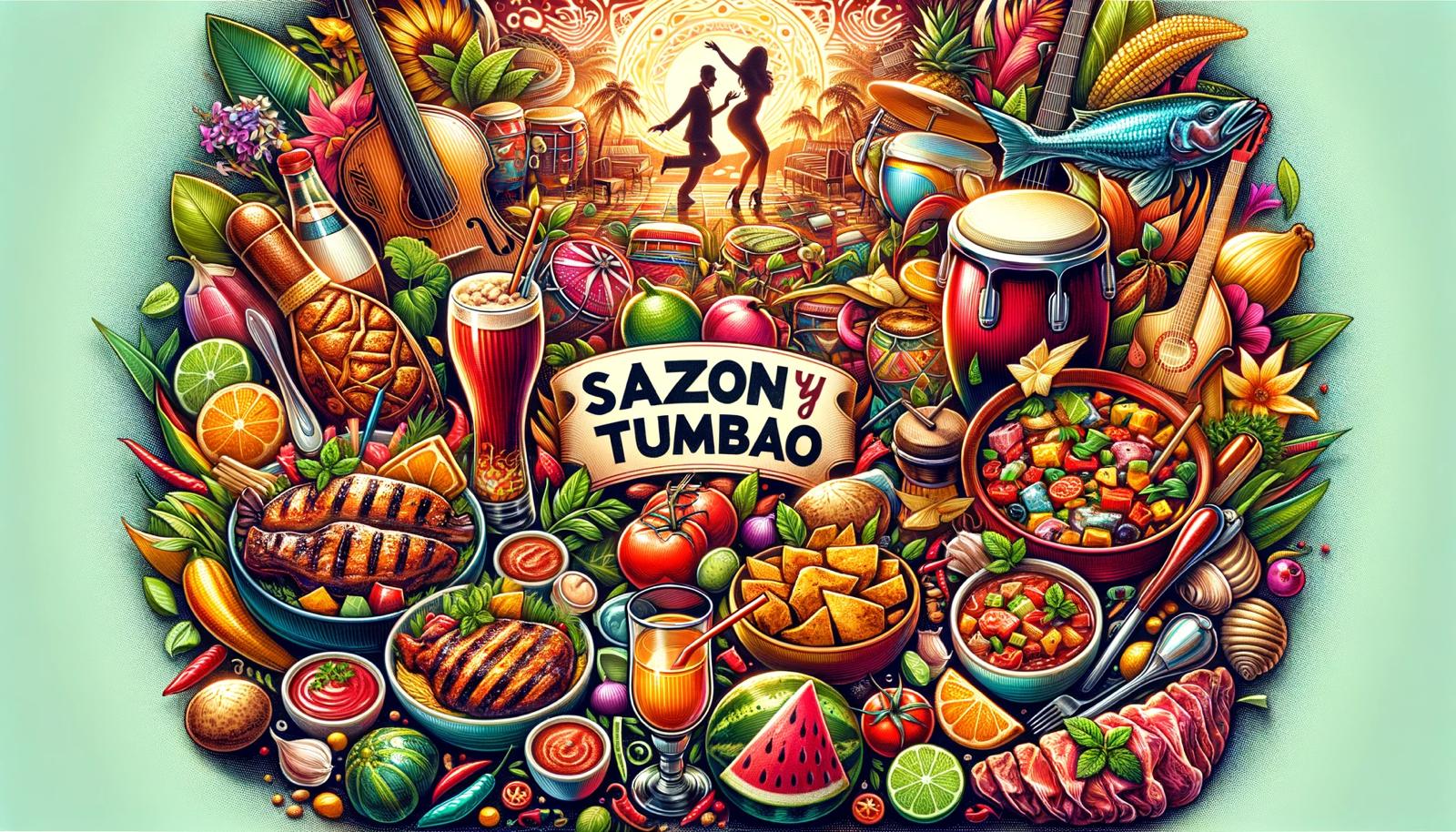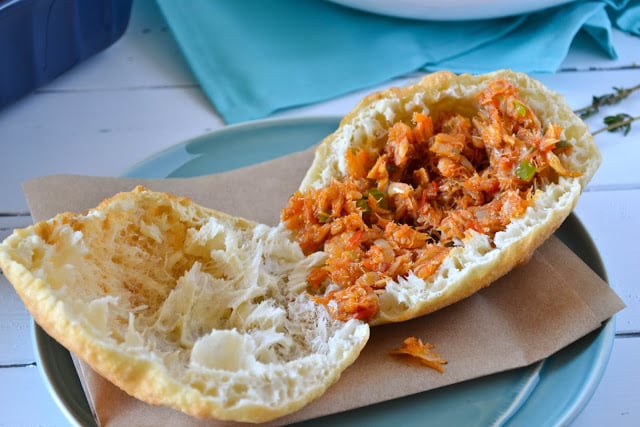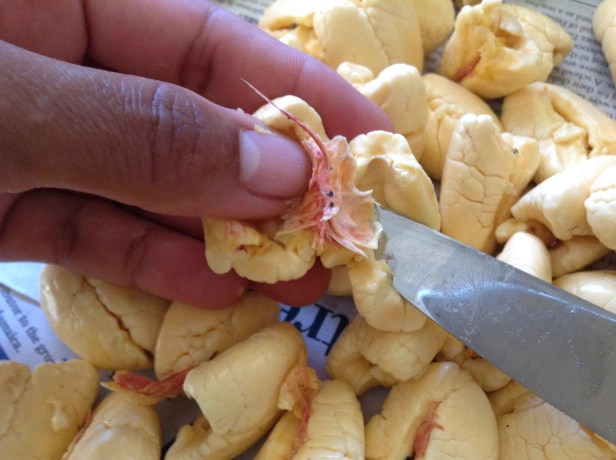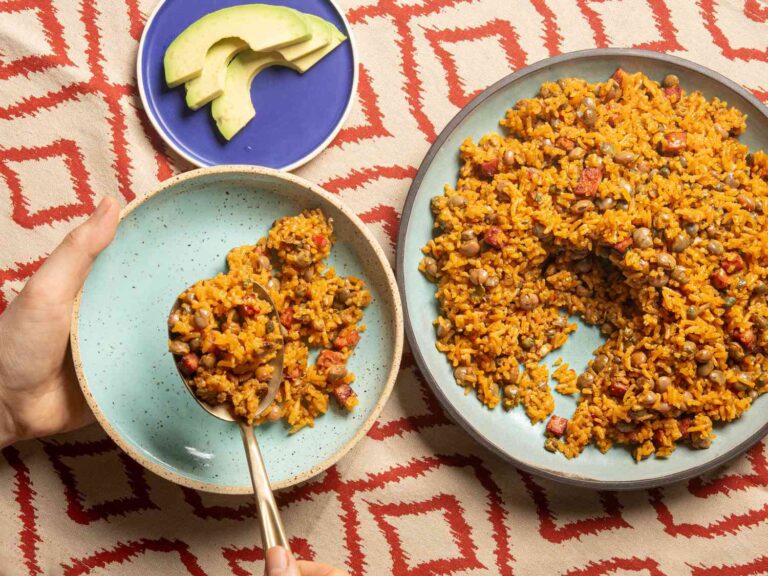Caribbean cuisine is a vibrant fusion of flavors, deeply influenced by the diverse cultures that have shaped the islands’ history. From African and Indigenous traditions to European and Indian influences, the culinary landscape of the Caribbean is as rich as it is diverse. At the heart of this bold cuisine are the spices—aromatic, spicy, and sweet—that bring life to every dish. Whether it’s the smoky heat of jerk seasoning or the fresh, herbal notes of green seasoning, spices play a pivotal role in defining the region’s iconic flavors.
In this guide, we’ll take you on a journey through the essential spices in Caribbean cooking, teach you how to make authentic spice blends at home, and explore the techniques that bring out the best in these powerful ingredients. By mastering the use of these spices, you’ll not only recreate the flavors of the Caribbean but also deepen your understanding of the region’s rich culinary heritage.

Understanding the Flavor Profiles of Caribbean Spices
Caribbean cooking is a celebration of vibrant and complex flavors, and spices play a crucial role in defining the unique taste of the region’s cuisine. By understanding the distinct flavor profiles of essential Caribbean spices, you can recreate the authentic, mouth-watering dishes that are a staple of this diverse cultural melting pot.

A Brief Overview of Caribbean Culinary Culture
Caribbean cuisine reflects the rich history of the region, influenced by a variety of cultures that have shaped its food traditions over centuries. The fusion of Indigenous, African, Indian, and European culinary practices has resulted in a truly unique cuisine that blends bold, spicy, and savory elements into every dish.
History and Influences: African, Indian, and Spanish Cuisines
The story of Caribbean cuisine begins with the region’s Indigenous peoples, who cultivated local ingredients such as cassava, peppers, and allspice.

Indigenous Peoples:
- Ingredients: Cassava, peppers, allspice
- Contributions: Cultivated local staples that formed the foundation of Caribbean food.
African Influence:
- Ingredients: Okra
- Techniques: Grilling, slow cooking
- Contributions: Brought new cooking techniques that are still used today.
Indian Influence:
- Ingredients: Curry, turmeric, cumin
- Contributions: Expanded the region’s spice palette with aromatic seasonings.
Spanish Colonists:
- Contributions: Introduced Mediterranean flavors to the mix.
- Ingredients: Olives, garlic, herbs
This blend of influences created a culinary tradition where spices are central to flavoring food, symbolizing a fusion of history and culture.
The Importance of Essential Spices in Caribbean Cooking
In Caribbean cooking, spices are more than just flavor enhancers – they are fundamental to the identity of the cuisine. Each spice, whether hot, sweet, or savory, serves to elevate dishes to new heights, infusing them with layers of complexity that are both bold and harmonious.
Why Spices Matter in Flavor Profiling
Spices in the Caribbean are used to create depth and balance in dishes. For example, the warm, woody flavor of allspice adds a robust backbone to marinades and jerk seasoning, while Scotch bonnet peppers bring a fiery heat that complements sweeter ingredients like coconut or tamarind. Understanding the balance of sweet, spicy, savory, and bitter is key to mastering the art of Caribbean cooking, allowing each dish to tell a flavorful story.

Role of Spices in Traditional Dishes
In traditional Caribbean dishes, spices are essential for creating signature flavors. Jerk chicken, for instance, relies on a blend of allspice, thyme, Scotch bonnet peppers, and garlic to achieve its iconic taste. Similarly, curries across the Caribbean often incorporate turmeric, cumin, and coriander to create their rich, aromatic bases. Spices are used not only to flavor but also to preserve meats, add heat, and create vibrant color, making them indispensable in Caribbean kitchens.

The Essential Spices Used in Caribbean Cuisine
Caribbean cuisine is a rich tapestry of flavors, with spices playing a pivotal role in creating the region’s iconic dishes. Below, we explore the essential spices that define the flavors of the Caribbean, from the warming depth of allspice to the fiery kick of Scotch bonnet peppers.
Allspice – The Quintessential Caribbean Spice
Allspice, also known as “pimento,” is considered one of the most important spices in Caribbean cooking. Derived from the dried berries of the Pimenta dioica tree, allspice is often mistaken for a blend of spices due to its complex flavor profile, which combines hints of cinnamon, nutmeg, and cloves.

- Flavor Profile and Aromatic Qualities
- The unique flavor of allspice is both warm and sweet, with a peppery undertone that adds depth to savory and sweet dishes alike. Its aromatic qualities are strong and earthy, with a fragrance that resembles a combination of clove and cinnamon. This spice is often used in both ground and whole forms, depending on the recipe.
- Culinary Uses: From Jerk Chicken to Desserts
- In Caribbean cooking, allspice is indispensable for creating the bold, spicy-sweet flavors of jerk seasoning, which is commonly used in dishes like jerk chicken and pork. Its versatility extends beyond savory applications – it also adds a warm, spicy note to Caribbean desserts such as spiced cakes, cookies, and puddings.
Scotch Bonnet Pepper – Adding Heat to the Dish
The Scotch bonnet pepper is a staple of Caribbean cuisine, known for its intense heat and fruity undertones. This fiery pepper is commonly used in sauces, marinades, and stews to bring a burst of heat to the dish, elevating the overall flavor profile.

- Understanding the Spice Level of Scotch Bonnet
- Scotch bonnet peppers are one of the hottest peppers in the world, with a Scoville rating ranging from 100,000 to 350,000 units. Despite their intense heat, Scotch bonnets are also known for their sweet, almost tropical flavor, which balances the spice. When using Scotch bonnets, it’s important to adjust the quantity based on your heat tolerance and the other flavors in the dish.
- Substitutes and Pairing Tips
- If Scotch bonnet peppers are too hot or hard to find, habanero peppers make an excellent substitute, as they share a similar heat level and flavor profile. When pairing Scotch bonnets with other ingredients, consider balancing their heat with sweetness from fruits like mango or coconut, or using cooling elements like yogurt-based sauces.
Nutmeg – The Sweet and Savory Enhancer
Nutmeg is another versatile spice that plays a key role in both sweet and savory Caribbean dishes. Harvested from the seed of the Myristica fragrans tree, nutmeg adds a distinctive warmth to many traditional recipes.

- How to Use Nutmeg in Meat Dishes and Desserts
- Nutmeg’s subtle sweetness and warm flavor make it an ideal spice for both meat dishes and desserts. In Caribbean cuisine, nutmeg is often grated fresh and added to savory dishes like stews and curries, particularly those featuring lamb and goat. It also enhances desserts such as rum cakes, custards, and pies, where its rich, spicy aroma adds depth.
- Health Benefits and Precautions
- Nutmeg has been traditionally used for its medicinal properties, such as aiding digestion and relieving pain. However, it’s important to use nutmeg in moderation, as large amounts can be toxic due to the presence of myristicin, a compound that can cause hallucinations and other adverse effects when consumed in excess.
Thyme – The Versatile Herb for Savory Dishes
Thyme is a popular herb in Caribbean cuisine, often used in stews, soups, and marinades. Its earthy, slightly minty flavor pairs well with a variety of other spices, making it a staple in many traditional dishes.

- How Thyme Complements Caribbean Stews and Soups
- Thyme is a key ingredient in many Caribbean stews and soups, where its herbaceous flavor complements the hearty, rich ingredients often used. Dishes like oxtail stew and fish tea rely on thyme to add a layer of freshness and complexity, cutting through the richness of meats and broths.
- Pairing Thyme with Other Spices
- Thyme pairs beautifully with other Caribbean spices, particularly allspice, garlic, and Scotch bonnet peppers. Together, these ingredients create a balanced flavor profile, with thyme adding a fresh, herbal note that enhances the overall dish without overpowering the bolder spices.
Creating Caribbean Spice Blends at Home
One of the best ways to capture the authentic flavors of the Caribbean in your own kitchen is by making your own spice blends. Whether it’s the smoky heat of jerk seasoning or the vibrant freshness of Trinidadian green seasoning, these homemade blends allow you to customize the flavors while staying true to traditional Caribbean culinary practices.
Homemade Jamaican Jerk Seasoning
Jamaican jerk seasoning is one of the most iconic spice blends of the Caribbean, known for its fiery heat, warm spices, and deep, smoky flavor. By making your own jerk seasoning at home, you can control the intensity of the heat and experiment with different spice combinations for a personalized touch.

Essential Ingredients for Authentic Jerk Flavor
To create a truly authentic jerk seasoning, certain core ingredients are non-negotiable:
- Allspice: Ground allspice is the cornerstone of jerk seasoning, offering a warm, spicy-sweet foundation that brings depth to the blend.
- Scotch Bonnet Peppers: These fiery peppers are essential for giving jerk seasoning its signature heat.
- Thyme: Fresh or dried thyme adds an earthy, herbal note that balances the spiciness.
- Garlic: Fresh garlic provides pungency and enhances the overall flavor profile.
- Cinnamon & Nutmeg: These spices add a sweet, warm undertone to the blend, rounding out the heat with complexity.
- Brown Sugar: Helps to caramelize and add a touch of sweetness to counterbalance the spiciness.
- Ginger: Adds a subtle spicy-sweet element that brightens the overall flavor.

These ingredients, when combined, create a balanced and flavorful jerk seasoning that can be used on meats, seafood, and even vegetables.
Step-by-Step Guide to Mixing Your Own Jerk Blend
- Start with the allspice: Use 2 tablespoons of ground allspice as the base of your mix.
- Add heat: Dice 2-3 Scotch bonnet peppers (adjust for desired heat) and incorporate them into the blend.
- Herbal kick: Mix in 1 tablespoon of dried thyme or a handful of fresh thyme leaves.
- Add garlic and ginger: Grate 2 cloves of garlic and 1 tablespoon of fresh ginger into the mix.
- Sweetness and warmth: Add 1 teaspoon each of cinnamon, nutmeg, and brown sugar.
- Final blend: Optionally, you can include salt and black pepper to taste. Mix all ingredients thoroughly, and your jerk seasoning is ready to use.
Store the mixture in an airtight container for future use, or rub it directly onto your meats and let it marinate for at least 2 hours to allow the flavors to penetrate.
Trinidadian Green Seasoning
Trinidadian green seasoning is a bright, herbaceous mixture used as a marinade and flavor base in many Trinidadian dishes. This versatile blend, packed with fresh herbs, garlic, and peppers, is known for its vibrant flavor and ability to enhance almost any dish.

What Makes Green Seasoning Unique?
What sets Trinidadian green seasoning apart from other spice blends is its fresh, raw ingredients. Unlike jerk seasoning, which relies heavily on dried spices, green seasoning uses a variety of fresh herbs and vegetables. Key ingredients include:
- Cilantro: Adds a bright, citrusy note that is characteristic of this blend.
- Culantro (Shadow Beni): Known for its intense, pungent flavor, culantro is a must for authentic green seasoning.
- Thyme: Adds a familiar earthiness that balances the sharpness of other herbs.
- Garlic & Onions: These staples provide the savory backbone of the seasoning.
- Hot Peppers: Scotch bonnet or pimento peppers add a subtle kick without overwhelming the other flavors.
These ingredients are blended with oil or vinegar to create a smooth, pourable marinade that’s packed with fresh, green flavors.

Best Dishes to Use Green Seasoning
Green seasoning is incredibly versatile and can be used to marinate meat, seafood, and vegetables. Here are a few popular dishes where it shines:
- Trinidadian Pelau: A one-pot rice dish made with chicken, pigeon peas, and caramelized sugar, green seasoning is used to marinate the meat before cooking.
- Grilled Fish: Green seasoning makes an excellent marinade for fish, particularly when grilled, infusing the flesh with herby, zesty flavors.
- Trini Stew Chicken: Often used as a marinade for stewed chicken, green seasoning helps to create a depth of flavor that enhances the overall dish.
Cooking Techniques to Enhance the Flavor of Caribbean Spices
While the right blend of spices is essential for authentic Caribbean cooking, the way you handle these spices can make a significant difference in the flavor of your dishes. Using the proper cooking techniques—like toasting, grinding, and marinating—helps unlock the full potential of Caribbean spices, bringing depth, complexity, and balance to your meals.

Toasting and Grinding Whole Spices
Whole spices are often preferred in Caribbean cooking because they offer more robust flavor compared to pre-ground spices. By toasting and grinding your spices just before use, you can elevate their aromatic qualities, releasing essential oils and intensifying their flavors.
Why Toasting Spices Enhances Flavor
Toasting whole spices is a simple yet powerful technique that enhances their flavor by gently heating them to release natural oils. This process deepens the spices’ aromas and flavors, adding warmth and complexity to any dish.
For example, lightly toasting allspice or cumin can bring out their sweet, earthy notes, making them ideal for seasoning jerk chicken or curries. Toasting should always be done over low heat to prevent burning and to ensure the spices develop their full flavor without becoming bitter.
Best Practices for Grinding Spices at Home
Once toasted, grinding your spices just before use is the next step to ensuring maximum flavor. For best results, use a mortar and pestle or a dedicated spice grinder. Here are a few tips:
- Grind small batches: Grind only what you need for the recipe to keep the spices fresh.
- Pulse, don’t blend: If using an electric grinder, pulse rather than blend continuously to prevent overheating, which can dull the flavor.
- Adjust coarseness: Depending on the dish, you may want a coarse or fine grind. For example, jerk seasoning benefits from a coarser grind for texture, while a fine grind works better in spice rubs for grilled fish.
By grinding your spices just before use, you capture their freshness and maximize their flavor potential.
Marinating with Spice Blends
Marinating is another technique essential to Caribbean cuisine, allowing the spices to deeply penetrate meats and vegetables, creating layers of flavor. Whether using jerk seasoning or green seasoning, marinating time and the addition of complementary ingredients like citrus or vinegar can greatly affect the outcome of your dish.
How Long to Marinate Different Meats
The length of time needed for marinating depends on the type of meat and the intensity of the spice blend. Here’s a general guide:
- Chicken: Marinate for at least 2 to 4 hours, or overnight for deeper flavor. Chicken’s porous texture allows it to absorb spices well.
- Pork: For pork, especially when using strong jerk seasoning, aim for 6 to 8 hours or overnight to ensure the flavors penetrate the tougher cuts of meat.
- Fish: Fish only needs 30 minutes to 1 hour of marinating, as it is delicate and absorbs spices quickly.
- Beef: Beef can marinate anywhere from 4 to 12 hours, depending on the cut. For tougher cuts like flank or brisket, a longer marination time helps tenderize the meat while infusing the flavors.
Be careful not to over-marinate, especially with delicate meats like fish, as the acids in the marinade can begin to “cook” the protein, affecting its texture.
Using Citrus and Vinegar to Balance Spice Intensity
Citrus fruits like lime, lemon, and orange are commonly used in Caribbean marinades to balance the intensity of the spices. Their bright, tangy flavors not only complement the earthy spices but also help tenderize the meat.
Similarly, vinegar—whether white, apple cider, or malt—is often added to marinades for its acidity. Vinegar cuts through the heat of spices like Scotch bonnet peppers, creating a more balanced flavor profile. When using citrus or vinegar, it’s important to strike a balance between the acidity and the spices so that neither overpowers the dish.
Final Thoughts
Mastering Caribbean cuisine starts with understanding and using the region’s essential spices. The richness of the Caribbean’s culinary heritage is deeply rooted in the bold flavors and diverse spice blends that have been passed down through generations. By familiarizing yourself with the key spices and techniques, you can bring the authentic flavors of the Caribbean into your own kitchen.
Embracing the Diversity of Caribbean Spices
One of the most exciting aspects of Caribbean cooking is the incredible diversity of spices used across the islands. From the fiery heat of Scotch bonnet peppers to the warm, complex notes of allspice, each spice contributes to the unique flavor profiles that define the region’s cuisine.
By embracing this diversity, you can explore the depth of Caribbean food culture, whether it’s the robust, smoky flavors of Jamaican jerk, the herbal brightness of Trinidadian green seasoning, or the sweet and savory balance found in dishes using nutmeg and cinnamon. Each spice tells a story, and understanding how they work together allows you to recreate authentic Caribbean flavors while adding your own personal touch.

Experimenting with Spice Combinations for Unique Flavors
While traditional spice blends are a great starting point, don’t be afraid to experiment with new combinations. Caribbean cuisine is all about bold, vibrant flavors, so feel free to mix and match spices based on your preferences. Try combining allspice with cinnamon for a warm, comforting flavor, or pair thyme with garlic and citrus for a fresh, zesty marinade.
Experimenting with spice combinations allows you to create your own signature dishes while staying true to the essence of Caribbean cooking. Whether you’re spicing up a stew or marinating meat for the grill, the possibilities are endless when you let your creativity guide you.
Disclosure: Our blog contains affiliate links to products. We may receive a commission for purchases made through these links. However, this does not impact our reviews and comparisons. We try our best to keep things fair and balanced, in order to help you make the best choice for you.







